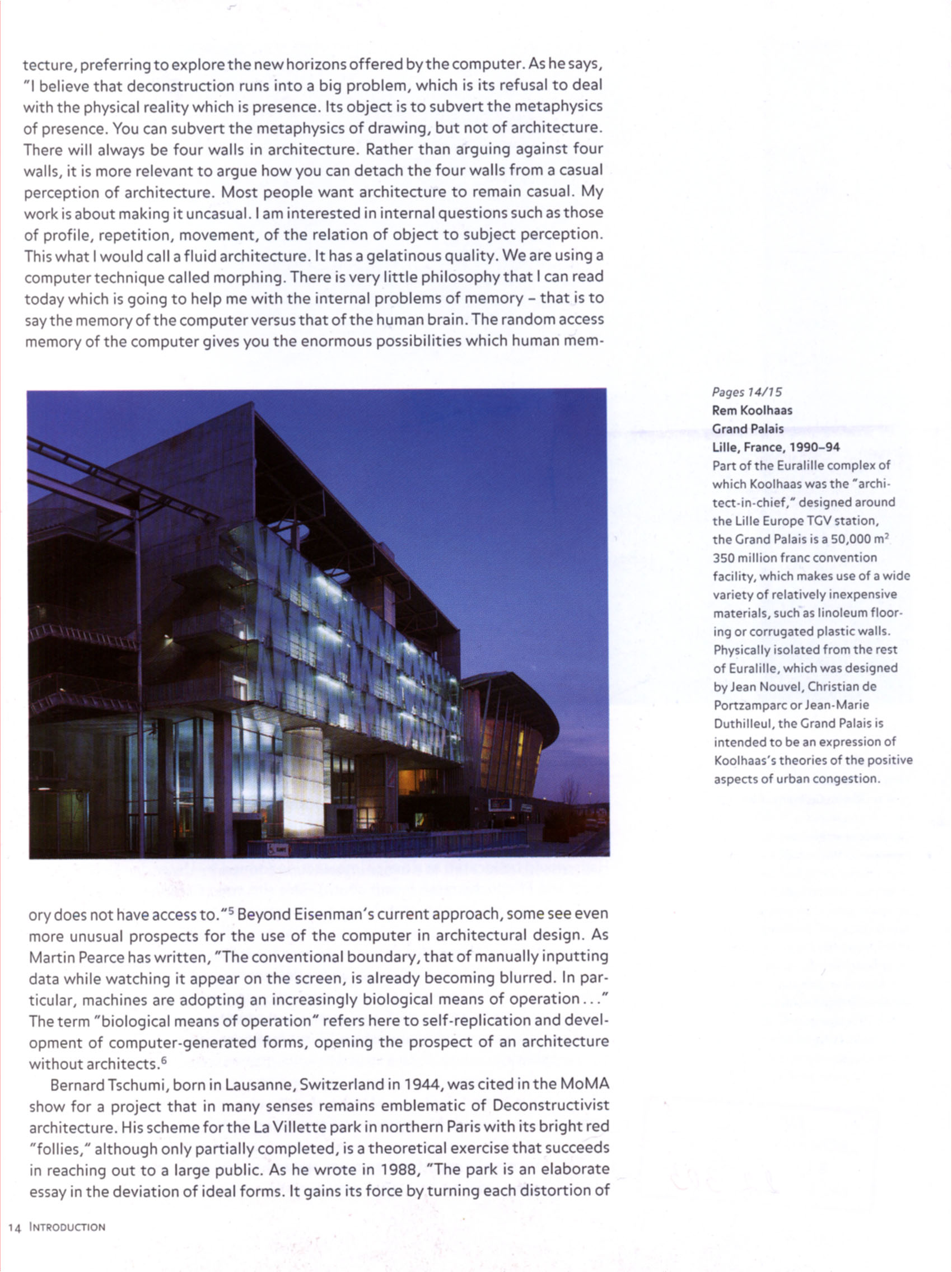New Forms Taschen 012

tecture, preferring to explore the new horizons offered by the Computer. As he says, "I believe that deconstruction runs into a big problem, which is its refusal to deal with the physical reality which is presence. Its object is to subvert the metaphysics of presence. You can subvert the metaphysics of drawing, but not of architecture. There will always be four walls in architecture. Rather than arguing against four walls, it is morę relevant to argue how you can detach the four walls from a casual perception of architecture. Most people want architecture to remain casual. My work is about making it uncasual. I am interested in internal questions such as those of profile, repetition, movement, of the relation of object to subject perception. This what I would cali a fluid architecture. It has a gelatinous quality. We are using a Computer technique called morphing. There is very little philosophy that I can read today which is going to help me with the internal problems of memory - that is to say thememory of the Computer versus that of the human brain.The random access memory of the Computer gives you the enormous possibilities which human mem-

Pages 14/15 Rem Koolhaas Grand Palais Lille, France, 1990-94 Part of the Euralille complex of which Koolhaas was the "archi-tect-in-chief," designed around the Lille Europę TGV station, the Grand Palais is a 50,000 m7 350 million franc convention facility, which makes use of a wide variety of relatively inexpensive materials, such as linoleum floor-ing or corrugated plastic walls. Physically isolated from the rest of Euralille. which was designed by Jean Nouvel, Christian de Portzamparc or Jean-Marie Duthilleul, the Grand Palais is intended to be an expression of Koolhaas's theories of the positive aspects of urban congestion.
ory does not have access to."5 Beyond Eisenman's current approach, some see even morę unusual prospects for the use of the Computer in architectural design. As Martin Pearce has written, "The conventional boundary, that of manually inputting data while watching it appear on the screen, is already becoming blurred. In par-ticular, machines are adopting an increasingly biological means of operation.. The term "biological means of operation" refers here to self-replication and devel-opment of computer-generated forms, opening the prospect of an architecture without architects.6
Bernard Tschumi, bom in Lausanne, Switzerland in 1944, was cited in the MoMA show for a project that in many senses remains emblematic of Deconstructivist architecture. Hisschemeforthe La Villette park in northern Paris with its bright red "follies," although only partially completed, is a theoretical exercise that succeeds in reaching out to a large public. As he wrote in 1988, "The park is an elaborate essay in the deviation of ideał forms. It gains its force by turning each distortion of
14 Introduction
Wyszukiwarka
Podobne podstrony:
New Forms Taschen 119 ern artists to touch fundamenta! elements that are still very much part of eve
New Forms Taschen 071 Holi is one of the morę thoughtful contemporary architeas. He has written, &qu
New Forms Taschen 107 Fumihiko Maki Tokyo Metropolitan Gymnasium Tokyo, Japan, 1986-90 Variousl
60530 New Forms Taschen 086 JaparTs Thirst for Art The economic miracle of Japan. although dulled
85078 New Forms Taschen 047 Urban Strategies PageSI Schneider + Schumacher Info Box Berlin, Germany,
33884 New Forms Taschen 193 In a very different style, the sculptural appearance of Josh Schweitzer
więcej podobnych podstron